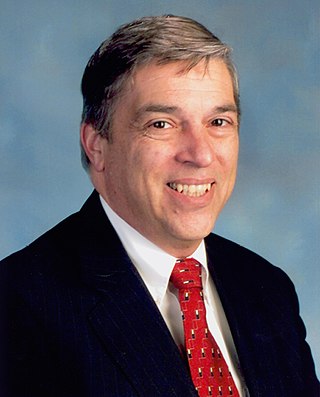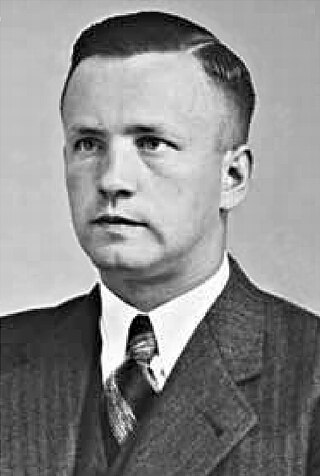Robert Gordon Switz (born 1904) was a "wealthy American who converted to communism" [1] and served as spy for Soviet Military Intelligence ("GRU"). [2] [3] [4]
Robert Gordon Switz (born 1904) was a "wealthy American who converted to communism" [1] and served as spy for Soviet Military Intelligence ("GRU"). [2] [3] [4]
Robert Gordon Switz was born in 1904 in East Orange, New Jersey, the son of Theodore Switz, a naturalized Russian, and Genevieve Switz. [5] He attended Mercersburg Academy but did not go to college. Instead, in 1922, he shipped out as seaman to Germany, which he toured. [3]
Switz went abroad again to France, where he obtained an airplane pilot's license, then trained at Roosevelt Field on Long Island. [3]
Some time during the 1920s, Switz joined the Communist Party USA and then the GRU (Soviet Military Intelligence) in the early 1930s. [2] [4] In New York, he worked in a network that included Lydia Stahl and Paulne Jacobson-Levine (later recounted in the 1952 memoir of Whittaker Chambers [6] ). [2]
In early 1933, Switz was involved in turning an American soldier, Robert Osman, stationed in Panama Canal Zone, via a "honey trap" - Frema Karry, a young Russian girl in Switz's network. Osman provided war plans. He was arrested, represented by socialist lawyer Louis Waldman (later lawyer for Walter Krivitsky), and imprisoned for 25 years. Switz escaped unnamed at the time. In July 1933, Switz was reassigned to a Paris-based network led by "Markovich." [2] He went to live in Paris as a sales representative for the MacNeil Instrument Company: the company's president J.N.A. Van Ven Bonwhuizsen later said, "He never made any sales." [3]
As a spy in Paris for the Soviets, Switz's role in espionage was to "gather French defense information for the benefit of Soviet intelligence." [1] In December 1933, French intelligence arrested Switz in his apartment on the Rue de la Chaussée d'Antin (near the Paris Opera). Most of the information collected concerned French armaments, and was a form of industrial espionage. It included nearly $3,800, letters from the French Ministry of War, and eggshells, each pierced on one end. His arrest led to the arrest of 29 others, including Stahl and Romania n spy Octave Dumoulin. Switz escaped prosecution by cooperating with investigators from La Sûreté nationale. The trial occurred in March 1935. [1] [2] [3] [4] [6] [7] [8] [9] [10]
In October 1933, Finnish-American Arvid Jacobson was arrested in Finland, whose government declared that Jacobson and Switz belonged to the same Soviet network between United States, Canada, France, Sweden, Norway, Estonia, and Latvia. [11]
On September 27–28, 1948, and again on February 27 and March 1, 1950, Switz testified before the House Un-American Activities Committee. [7]
In 1929, brother Paul F. Switz was a star football player at Yale University and later an economist. [12] Brother Theodore Switz was a chemical economist at Lehman Corporation . [3]
In 1933, Switz married Marjorie Tilley, daughter of Bertha Tilley and graduate of Vassar College. [3]
The Switz case ran concurrently with a scandal in France over Ukrainian born embezzler Alexandre Stavisky. [7]
"L'affaire Switz" offset any Soviet gains in intelligence into the French military with embarrassment for the USSR as well as the French Communist Party ("PCF"). [1] [6]

Robert Philip Hanssen was an American Federal Bureau of Investigation (FBI) agent who spied for Soviet and Russian intelligence services against the United States from 1979 to 2001. His espionage was described by the Department of Justice as "possibly the worst intelligence disaster in U.S. history".

Leopold Zakharovich Trepper was a Polish Communist and career Soviet agent of the Red Army Intelligence. With the code name Otto, Trepper had worked with the Red Army since 1930. He was also a resistance fighter and journalist.

The Main Directorate of the General Staff of the Armed Forces of the Russian Federation, formerly the Main Intelligence Directorate, and still commonly known by its previous abbreviation GRU, is the foreign military intelligence agency of the General Staff of the Armed Forces of the Russian Federation. The GRU controls the military intelligence service and maintains its own special forces units.
As early as the 1920s, the Soviet Union, through its GRU, OGPU, NKVD, and KGB intelligence agencies, used Russian and foreign-born nationals, as well as Communists of American origin, to perform espionage activities in the United States, forming various spy rings. Particularly during the 1940s, some of these espionage networks had contact with various U.S. government agencies. These Soviet espionage networks illegally transmitted confidential information to Moscow, such as information on the development of the atomic bomb. Soviet spies also participated in propaganda and disinformation operations, known as active measures, and attempted to sabotage diplomatic relationships between the U.S. and its allies.

J. Peters was the most commonly known pseudonym of a man who last went by the name "Alexander Stevens" in 1949. Peters was a journalist, political activist, and accused Soviet spy who was a leading figure of the Hungarian language section of the Communist Party USA in the 1920s and 1930s. From the early 1930s, Peters was actively involved in the espionage activities of the Soviet Union in the United States, fabricating passports, recruiting agents, and accumulating and passing along confidential and secret information.

Arvid Werner Jacobson was a Finnish-American communist who spied for the Soviet Union in the 1930s.

Lydia Stahl (1885-?) was a Russian-born secret agent who worked for Soviet Military Intelligence in New York and Paris in the 1920s and 1930s.

Yan (Ian) Karlovich Berzin, was a Latvian Soviet communist politician and military intelligence officer.
The OMS, also known in English as the International Liaison Department (1921–1939), was "the most secret department" of the Executive Committee of the Communist International. It has also been translated as the Illegal Liaison Section and Foreign Liaison Department.
Isaiah Oggins was an American-born communist and spy for the Soviet secret police. After working in Europe and the Far East, Oggins was arrested, served eight years in the GULAG detention system, and was summarily executed on the orders of Joseph Stalin.
Russian espionage in the United States has occurred since at least the Cold War, and likely well before. According to the United States government, by 2007 it had reached Cold War levels.

Main Intelligence Directorate, abbreviated GRU, was the foreign military intelligence agency of the General Staff of the Soviet Armed Forces until 1991. For a few months it was also the foreign military intelligence agency of the newly established Russian Federation until 7 May 1992 when it was dissolved and the Russian GRU took over its activities.
Nadezhda (Esther) Markovna Ulanovskaya (1903–1986), a.k.a. Nadia or Nadya, was a Soviet intelligence GRU officer, translator, English teacher, wife of Alexander Ulanovsky, and mother of Maya Ulanovskaya.

Heinz Michael Pannwitz was a German war criminal, Nazi Gestapo officer and later Schutzstaffel (SS) officer. Pannwitz was most notable for directing the investigation into the assassination of Obergruppenführer Reinhard Heydrich on 27 May 1942 in Prague. In the last two years of the war, Pannwitz ran the Sonderkommando Rote Kapelle, a combined Abwehr and Gestapo counterintelligence operation against the Red Orchestra espionage network, in France and the Low Countries.

Anatoly Markovich Gurevich was a Soviet intelligence officer. He was an officer in the GRU operating as "разведчик-нелегал" in Soviet intelligence parlance. Gurevich was a central figure in the anti-Nazi Red Orchestra in France and Belgium during World War II.
Johann Wenzel was a German Communist, highly professional GRU agent and radio operator of the espionage group that was later called the Red Orchestra by the Abwehr in Belgium and the Netherlands. His aliases were Professor, Charles, Bergmann, Hans, and Hermann. Wenzel was most notable as the person who exposed the Red Orchestra after his transmissions were discovered by the Funkabwehr, later leading to his capture by the Gestapo on 29–30 June 1942.
Karl Giering was SS-Hauptsturmführer and Criminal Councillor in the Geheimes Staatspolizeiamt Berlin (Gestapo) and later Head of Department IV A 2 in the Reichssicherheitshauptamt (RSHA). Giering is regarded as one of the most dangerous persecutors of the communist resistance against the Nazi regime. He commanded the Gestapo to smash the apparatus of the Betriebsberichterstattung (BB) of the Communist Party of Germany (KPD) and conducted investigations against the Soviet espionage network known as the Red Orchestra while part of the Sonderkommando Rote Kapelle.
Isidore Springer was Belgian diamond dealer and communist who became an important member of the Red Orchestra organisation in Belgium and later France during World War II. Springer worked as a recruiter and courier between Leopold Trepper, a Soviet agent who was the technical director of Soviet espionage in Western Europe, and Anatoly Gurevich, also a Soviet agent, in Belgium. He would later run the 6th network of Trepper's seven espionage networks in France, providing intelligence from US and Belgian diplomats. His aliases were Romeo, Verlaine, Walter van Vliet, Fred and Sabor.

Ernest David Weiss was a naturalised British Jewish transport economist who became a Soviet espionage agent, spying in the United Kingdom and possibly the United States. Weiss worked initially for the Communist International (Comintern) in the 1930s and later worked for the Red Orchestra espionage network through Comintern agent Henry Robinson in the early 1940s. In 1947, Weiss's name was discovered through an analysis of the Robinson papers by MI5. After his arrest and interrogation, Weiss proved to be remarkably cooperative, and in return for a confession he was promised immunity by MI5. He was found to have been a key individual in Soviet intelligence in the United Kingdom during the interwar period but had ceased working as an agent in 1941. He named many other contacts, and this led to further arrests. Weiss's cryptonym was Jean. After his confession, he retired from espionage work to work as part of piano double act that played in variety shows, music halls and theatres that regularly toured the UK. He lived in London until his death in 1982.
William T. Murphy,"The Honeymoon Spies: Robert Gordon Switz and Marjorie Tilley," American Intelligence Journal, 36:1 (2019),75-98.